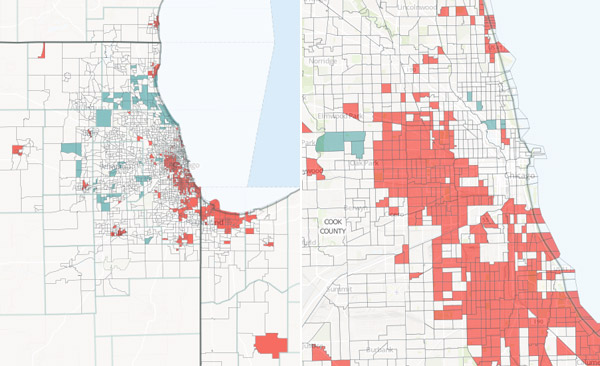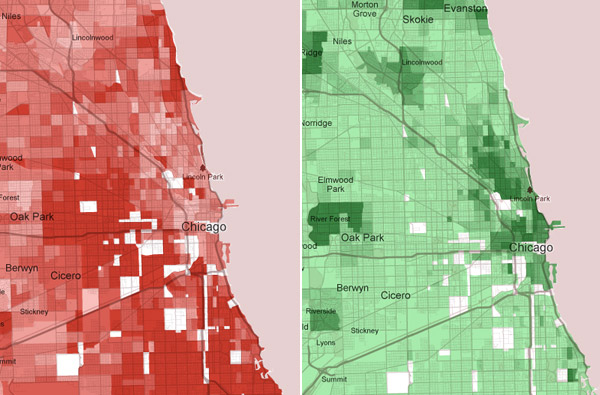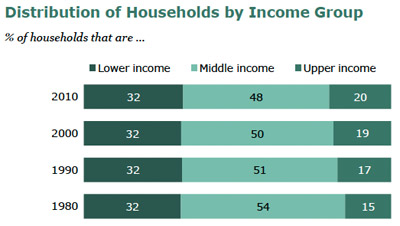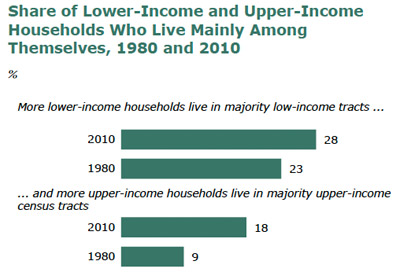Via Dennis Rodkin, aka @DealEstate, the Pew Center has a new report on income segregation in America. It's well established that Chicago is highly segregated by race, compared to most major cities. But what about segregation by income? According to Pew's metrics, the Chicago area actually compares favorably to other major metros. We're eighth by the share of lower-income households (less than $34,000) residing in majority lower-income census tracts, at 29 percent; Washington is just ahead of us at 31 percent, and New York has the highest, at 41 percent. We're ninth in the same share of upper-income households (more than $104,000): 12 percent, while Houston is first at 24 percent.
Sounds good, right? Looking at the city itself, via Pew's map, gives a different picture. On the left is the entire MSA, which is vast; on the right, the city and near suburbs:

A more familiar pattern emerges. The city has only five census tracts of majority high-income earners, but vast swaths of majority low-income households. The poverty in the MSA is concentrated in the city and in northwest Indiana.
If you change the parameters, other patterns emerge. The New York Times has an excellent Census-data browser, "Mapping America"; one interesting view is that of households making at least $200,000—twice the cutoff for Pew's high-income households—more 20 percent being the highest threshold (right). Another is that of families making under $30,000, from less than 10 percent to more than 40 percent (left).

On the South and West Sides, you find census tracts with below-$30k incomes making up 50-80 percent of the tract—up to 86 percent in one tract just west of Garfield Park. Incomes of more than $200k are less concentrated: one tract just west of Lincoln Park, just south of Armitage and east of Larrabee. Lincoln Park has the highest concentrations of such households, with multiple tracts of 30 percent and higher.
(Side note: Wicker Park/Bucktown have obviously gentrified, but the area is still considered kind of hipster, for lack of a better term. But the stretch of Damen just north of Milwaukee-Damen-North seemed to go legitimately chi-chi almost overnight, with a Marc Jacobs store and whatnot. Sure enough, the only census tract outside of Lincoln Park with more than 30 percent of households making more than $200k is the one bounded by Damen, Milwaukee, Leavitt, and Churchill.)
What's happening? As the middle class shrinks, income segregation is increasing. Majority-poor neighborhoods are increasing, and majority-upper-income neighborhoods are increasing even faster:


Interestingly, the distribution of lower-income households hasn't changed, but the concentration of them has. History, particularly here in Chicago, suggests it's something to be concerned about.



